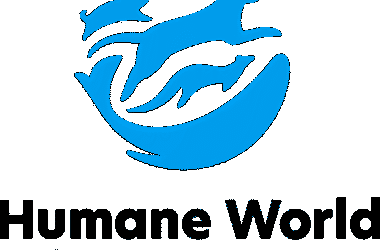Time monitoring presents varied advantages for groups like higher planning, elevated accountability, and smoother operations — however that doesn’t make it a straightforward promote. To many, overcoming worker resistance to time monitoring can appear insurmountable.
When managers change to time monitoring software program, workers could start to worry that their employer is prioritizing the clock over output. For a lot of workers, this seems like micromanagement in disguise.
That pressure is actual. Time monitoring can harm morale and undermine belief if it’s not dealt with fastidiously.
So, how do you keep away from worker time monitoring challenges and introduce worker time monitoring in a approach that respects your staff?
Increase your staff’s effectivity with Hubstaff’s productiveness instruments
Why workers resist time monitoring (and why it issues)
Staff don’t resist time monitoring out of spite. If you observe their time and so they push again, there’s often a very good cause (and ignoring that solely makes adoption more durable).
Resistance tends to return from a mixture of previous experiences, deeper issues about how work is measured, and the way that information is used.
Right here’s what’s typically behind worker resistance to time monitoring:
- It seems like surveillance. When time monitoring consists of screenshots or idle time alerts, it’s simply interpreted as an absence of belief. Even with out these options, being monitored all through the day can shift how folks work.
- It reduces efficiency to hours. If monitoring work hours turns into the first metric, it sends the message that presence issues greater than outcomes. That’s particularly irritating for data staff, the place deep work and artistic output don’t at all times correlate.
- It brings again dangerous recollections. Some folks have seen time monitoring used for micromanagement or public accountability experiences. As soon as that line’s been crossed, new programs for monitoring hours are usually met with skepticism, irrespective of how completely different the intent.
- The instruments are clunky. Poor UX, too many logins, or needing to leap between platforms all create friction. The extra the system interrupts a staff’s workflow, presents new time monitoring gaps, or different points, the quicker resentment builds.
- It undermines autonomy. If time monitoring is rolled out in a inflexible, one-size-fits-all approach, it might probably really feel like that flexibility is being taken away.
For those who don’t deal with these points, workers received’t cease resisting.
And even when they don’t present indicators of lively resistance, it is going to present up by some means within the type of:
Fallacious methods to deal with resistance (and why they backfire)
We’re calling this part the “unsuitable methods” to deal with resistance, but you’d be shocked that quite a lot of corporations default to those approaches. Generally, they’re well-intentioned, however they nonetheless often backfire.
As a substitute of constructing belief, they affirm each worry your staff had about monitoring within the first place.
Forcing adoption with out enter
Rolling out a brand new software with out asking for suggestions indicators one factor: this isn’t up for dialog, it’s a directive. The software may very well be the best on the planet, however skipping the dialogue makes it really feel imposed.
The end result? Course of-driven workers who don’t purchase into the values themselves. They do the naked minimal or quietly discover methods round it.
Utilizing screenshots and exercise monitoring as default
Nothing says “we don’t belief you” like monitoring each click on.
Instruments that file screenshots or flag inactivity would possibly look like they may also help hold folks centered, however they’ll simply create a tradition of tension. The main target shifts from doing good work to wanting busy.
And as soon as belief is gone, it’s exhausting to rebuild.
Exercise monitoring can be useful, however provided that workers are absolutely conscious of what’s being tracked and so they have management over what they need employers to see. That’s why Hubstaff provides groups the choice to show off screenshots or set softer exercise thresholds.
Incentivizing uncooked hours as a substitute of outcomes
If the unstated message is “extra hours = higher efficiency,” folks will sport the system. However productiveness doesn’t immediately coorelate to uncooked hours — it’s a ratio of outputs per hour.
In different phrases, uncooked hours solely imply one thing in the event that they’re proportionate to the output one creates. If customers keep logged in longer, pad time entries, or keep away from deep work, it penalizes the individuals who work effectively as a substitute of rewarding them.
Utilizing information punitively
Time information ought to be a suggestions software, not a weapon. Nevertheless, when it’s used to name folks out in conferences or justify snap judgments, staff members understandably despise it.
That results in manipulating numbers, disengagement, or even turnover. As a substitute of reaching the productiveness targets you have been aiming for once you carried out time monitoring, worker efficiency deteriorates.
Take Barclays, for instance.
They tried rolling out software that tracked employee breaks, lavatory journeys, and time spent away from desks.
The backlash was speedy. Employees described it as “stress past perception,” and this system was scrapped inside weeks.
For those who go too far with monitoring, your worker turnover charge will climb quicker than your productiveness ever will.
5 confirmed methods to scale back resistance
If you would like time monitoring adoption with out all of the friction, you want buy-in. Not from everybody without delay, however from the proper locations, in the proper approach.
1. Contain workers in selecting the software and shaping the rollout
Don’t simply drop a platform in your staff and anticipate them to be keen about it. As a substitute, begin with a shortlist of choices and invite suggestions.
A small pilot group can stress-test the software, flag usability points, and assist form the way it’s launched. That early involvement pays off as a result of individuals are much more more likely to help one thing they helped construct.
Construct in suggestions loops to debate:
- What’s working
- What’s getting in the best way
- What enhancements may be carried out
- Methods to implement mentioned enhancements
Then act on the solutions. Belief will compound over time.
2. Be crystal clear about what’s being tracked and what’s not
Most resistance comes from uncertainty.
“Will this observe my each transfer?” “Will it flag me for being inactive once I’m pondering or off-screen?”
Earlier than rollout, outline precisely what you intend to observe (i.e., time on duties, undertaking administration, and many others.), what received’t (i.e., non-public apps, idle time), and who sees the information.
Instruments like Hubstaff let groups modify settings to match their tradition by permitting them to:
- Disable screenshots fully
- Monitor solely particular tasks or hours
- Maintain visibility restricted to staff leads or undertaking homeowners
That degree of management tells your staff precisely what to anticipate whereas making it clear they received’t be tracked with out consent or context.
3. Tie it to one thing that advantages them, not simply you
If time monitoring solely helps managers create experiences, don’t anticipate a lot buy-in (if any).
But it surely’s extra related if it helps the staff steadiness workloads, keep away from burnout, or make a case for hiring.
Body it like this: “Once we perceive the place we spend time, we are able to repair overloaded schedules, plan smarter, and defend area for centered work.”
4. Monitor time and outcomes, by no means simply hours
Precisely monitoring worker hours is essential to success, however nothing kills motivation quicker than being measured purely on time spent working. If somebody completes their work in six or seven centered hours, they shouldn’t really feel stress to pretend eight.
Pair time information with output-focused KPIs to point out what actually issues. Relying on the staff, that might embody:
- Venture milestones hit
- Consumer satisfaction scores
- Gross sales closed or income generated
- Story factors or duties accomplished
- Inner deadlines met
Time spent is however one lens. It’s solely helpful when paired with one thing that displays influence.
5. Begin with champions, not mandates
Don’t roll it out company-wide on day one. As a substitute, begin with a couple of well-respected staff members open to testing and giving suggestions. These early adopters may also help form the narrative and construct credibility internally.
Autonomy has at all times been one of many prime priorities for a lot of workers. It’s in your organization’s finest curiosity to guard it.
Methods to introduce time monitoring with out breaking belief
A stable argument may be made that implementing time monitoring is extra of a cultural course of than a technical one.
Individuals will assume the worst if the primary transfer indicators management or secrecy. To beat worker resistance to time monitoring, your rollout has to strike a tone of belief and transparency, not surveillance.
Right here’s a framework that helps you try this proper:
1. Align management earlier than something goes public
Earlier than you contain the complete staff, be certain that management is on the identical web page. Ensure you’re ready to reply questions like:
- Why ought to we observe time?
- What are we planning to trace?
- What’s off limits?
- How will we get buy-in from the staff as a complete?
If managers give blended messages (or worse, keep away from the subject) resistance will fill the hole. Ensure you doc the “why” in plain language. If management can’t clarify it clearly, workers received’t purchase it.
2. Craft messaging that treats folks like adults
Keep away from generic speech like “we’re monitoring time to optimize productiveness for higher enterprise outcomes.”
You don’t need to ship the information with a robotic tone, however you don’t should be overly keen about it both. You simply should be clear about what’s altering, what shall be tracked, and what received’t, and attempt to actually empathize with the staff and their ache factors.
Among the finest methods to do that is to the touch on the upside for workers:
- Much less guesswork on capability
- Higher visibility for hiring wants
- Clearer workload planning.
For example:
“We’re testing this time monitoring system to see how our time is spent, how we are able to use our time extra successfully, and the way that may deliver a few wholesome work-life steadiness. The objective is to make issues simpler, not add stress.”
3. Create a suggestions loop and use it
Monitor the implementation intently. Ask for suggestions early and infrequently, and guarantee folks see that their enter shapes the rollout.
One easy tweak (like turning off screenshots or narrowing what will get tracked) can flip skeptics into advocates. Time monitoring instruments like Hubstaff assist right here. You possibly can management settings at a undertaking degree, enable customers to pause monitoring, and switch off options that don’t transfer you nearer in direction of your targets.
4. Develop regularly, with belief nonetheless entrance and heart
Solely develop when you’ve addressed issues and the pilot feels steady.
Maintain messaging constant and keep away from punishing early errors or inconsistencies. Time monitoring works finest when it’s regular, clear, and a part of the staff’s workflow.
In case your workers really feel compelled to handle round time monitoring, it’s an indication to pause. Repair the belief points first. In any other case, you’re simply scaling friction.
How an company made time monitoring work for everybody
Alpha Effectivity, a digital company constructed on freelance-style fashions, has relied on Hubstaff. Administration wanted correct time monitoring for billing and workload visibility. Nevertheless, not everybody on the staff was instantly on board.
Some workers have been understandably hesitant and nervous about how the time monitoring information could be used. However that modified when management tied time monitoring to sensible advantages:
- Efficiency bonuses
- Extra correct payroll
- Much less time spent in conferences
As soon as these connections have been made, resistance light.
In line with the staff, some tasks began ending as much as 30% quicker. When time monitoring is used to help folks (not management them), it really works.
Conclusion
Time monitoring can floor quite a lot of pressure — a few of it earned, a few of it simply years of dangerous rollouts.
However when it’s executed with transparency and care, it helps you to plan smarter, spot burnout early, and defend focus time.
That begins by being trustworthy and offering ongoing help about what you’re monitoring and why.
It means beginning small — one staff, one pilot — and listening to what the suggestions says. It additionally means giving folks some management, not simply handing them a brand new software and a deadline.
Belief doesn’t come from software program, guide time monitoring, or every other software. It comes from the way you roll it out, the way you reply to issues, and whether or not the brand new time monitoring system helps the complete staff.
Need in-office, distant, or GPS time monitoring with out the drama? Begin a free 14-day trial with Hubstaff and construct from there.
Source link






